Yates Account
Join now
Create a Yates account today!
Sign up to join the Yates Garden Club for monthly e-mails packed with seasonal inspiration, tips for success & exclusive promotions.
Plus if you’re a Garden Club member you can take part in the Yates Growing Community - a blog to share successes, get advice & win prizes in fun challenges along the way!

Forgot password
Enter the email address associated with your account, and we'll email you a new password.

Spring Feeding for Lawns
Grass ideally needs a feed during late winter or early spring, to have all the necessary nutrients in place, as the key growing season begins. If you haven't done it yet, feeding this month will still give you good results. Ongoing, a second feed at the end of spring will retain the growth and health gains over the summer period.
Yates Dynamic Lifter Organic Lawn Food, which combines composted chicken manure, blood & bone, fish and seaweed is ideal to enrich the structure of the soil. It does this by adding organic content that encourages earthworms and beneficial soil micro-organisms, that in turn help to improve the soils porosity (drainage) and air movement. This all makes it easier for your lawn to grow and root deeper into the soil.
In spring, there are real advantages to using a premium slow-release fertiliser. Reduced frequency of application is an obvious one, but avoiding surges or spikes in growth and nutrient overload is also a major benefit. Slow-release fertilisers perform consistently well throughout the year, because they supply just enough nutrients to match the grass’s needs, whether it’s dormant or growing flat-out. They're not the cheapest fertilisers on the shop shelf, but you also don't need to go 'top-of-the-range' to get a sustained feed. We think the long-term benefits make slow-release fertilisers the best value for money.
For all-round performance and value, we heartily recommend Yates Lawn Fertiliser Quarterly. It's a clever granular lawn food that combines the benefits of both fast-acting and gradually released nitrogen - the fast-release component provides rapid results in 7 days, while the slow-release nitrogen feeds over a prolonged 12 week period.

Clean Up Lawn Weeds
It's important to control broadleaf weeds in spring, because they'll compete with your new grass.
Weeds like clover, dandelions, chickweed, capeweed and thistles are opportunistic and will invade even the smallest bare spots in the lawn. If weeds are allowed to flower and set seed, they've created future generations of weeds. Tackling weeds early keeps the lawn looking good and reduces your weeding workload for the next couple of years. Fortunately, it's easy to take care of with a selective herbicide. This is the type of weedkiller that removes weedy invaders without harming your lawn grass.
A quick hose-on application of Yates Weed'n'Feed Hose On will control the most common broadleaf weeds. It's ideal for cool-season grass types like fescue, tall fescue, perennial ryegrass and bent/browntop.
Alternatively, if your lawn isn't very large, or you have spots the hose won't reach, Yates Weed'n'Feed Concentrate allows you to treat 65 m2 of lawn with a watering can or sprayer.

There are a few tricky weed species that require a special approach. Did you get any complaints about prickles in your family's bare feet last summer? If you did, it's time to tackle it right now - your window of opportunity to control Onehunga weed before it flowers and forms needle-sharp prickles, closes in late spring. Yates Prickle Weedkiller is our go-to product for this nasty little weed.
You might also encounter one of the persistent offender lawn weeds that you'll need to call in the big guns for - native hydrocotyle and creeping oxalis are examples. To get on top of these difficult weeds, choose Yates Hydrocotyle Killer for the job.
A word of warning though, if you're oversowing grass seed it pays to time your weedkiller applications carefully. Selective lawn weedkillers can affect the germination rate of grass seed, if you sow too soon after you've applied weedkiller. The rule of thumb is to wait for 4-5 weeks after using lawn weedkiller, before you sow grass seed onto the treated area; this ensures you get peak grass germination and excellent results from your hard work.
Pro tip: the healthier and thicker the lawn, the more it suppresses weeds. Feeding your lawn regularly with an organic lawn fertiliser like Yates Dynamic Lifter Lawn Food will help grow a thick, deep green lawn and nurture the soil at the same time.

How to Start a Lawn From Scratch, with Seed
Spring is an ideal time to start a fresh new lawn - lawn seed is an economical way to do it, helping to create a lush green space that'll deliver years of enjoyment. Here’s how to start a new lawn from seed, with some extra tips to keep your lawn looking great.
To get the best possible results from sowing, there are a few key steps:
-
Weed Control – weeds will compete with your new grass, so spray the area with Yates Zero Super Concentrate Weedkiller, two weeks before sowing lawn seed. This allows the weedkiller to do its job efficiently and allows you to begin with a clear area.
-
Soil Preparation – to give the new grass the best possible start, break up and loosen the soil surface with a rake to create a softer 'seedbed' layer for the seed to germinate in. When the sowing area has a layer of loose soil, lightly rake the whole area in one direction to create shallow furrows.
-
Measure – measure the area and calculate the amount of lawn seed you'll need for optimum coverage. Don't be tempted to 'add some extra', because grass germinates better when it's not overcrowded.
-
Sow – Mix the required amount of lawn seed with a starter fertiliser. Yates Lawn Fertiliser for New Lawns is ideal for this. This makes it easier to spread the lawn seed, adds valuable organic matter to the soil and provides the new grass seedlings with gentle slow release nutrients as they establish. Broadcast the grass seed evenly over the area. It helps to halve the seed and sow the first half in an East-West direction, then sow the other half over the top of the first, in a North-South direction. After sowing, gently cross rake the area to mix the seed into the soft topsoil.

-
Water – keep the area moist with a fine mist spray or a sprinkler while the seed is germinating. It's critical to prevent grass seed from drying out during the germination phase, as drying out for even a short period can kill delicate new grass shoots. Keeping the topsoil moist often requires watering several times a day. After germination, it’s also very important to keep the top 1cm of soil moist for the first 2 – 3 weeks while the grass establishes. The most common reason for a newly sown lawn not being successful is drying out during the germination and establishment phase.
-
Mow – hold off mowing until the grass is 5-8 cm high. Trim very lightly - only take off the very top of the grass blades, gradually lowering the mower height over multiple passes, down to an ideal cutting height of 2.5cm.

Choose the Right Lawn Seed for the Job
We're a diverse bunch in New Zealand, so our lawns can play all sorts of roles. The way we live with our lawns varies widely...some lawns might need to shrug off rough & tumble from exuberant kids and pets, for others the primary goal is to look manicured and immaculate.
On top of that, our climate varies a lot, from the bottom to top of the country. Lawn grass might need to tolerate hard frosts, or make it through a hot, parched summer without wasting tank water. A lawn can be shaded or sunlit, wet and squelchy underfoot, or dry as a bone. No matter what you use your lawn for, or the conditions at your place, there will be a grass variety that works best for you.
If you'd like a detailed comparison of all the popular grass types to help your understand their pros and cons, you can find it here.

TL,DR: Read on for the shorter list of our favourites, with what makes them special.
1. Early Season Sowing: Yates Sow Anytime Lawn Seed has the unique ability to germinate at temperatures as low as 3°C, meaning it can be used throughout the year. It's a clever blend of stadium-grade ryegrass and creeping red fescue, that delivers a vibrant green, lush lawn.
2. Fast Patch Repair: Yates Seed'n'Feed is easy to use, containing everything you need to fix bare patches and thicken an existing lawn. This product takes care of 2 jobs at once - it includes fast-germinating grass seed, along with gentle fertiliser, to feed new (and existing) grass for up to 12 weeks. Yates Seed'n'Feed contains the same seed varietals as Yates Sow Anytime Lawn Seed, so it will also germinate at low temperatures, which gives you more flexibility about when to sow.
3. Robust All-Rounder: Yates Tall Fescue Lawn Seed is tolerant to drought and extended wet periods, plus highly resistant to wear and tear. It's not fussy about soil quality and it's suitable for a wide range of climates. It contains a blend of perennial ryegrass and tall fescue, to produce a rich, dark green lawn, with a medium-soft blade. It's a bit slower-growing than other types.
4. Highly Drought-Tolerant: Yates Kikuyu Lawn Seed makes an excellent coastal grass for warm areas. It's a vigorous grower, that forms a dense carpet of weed-resistant turf. Kikuyu is resilient, self-repairing, copes with repeated traffic, doesn't need much water and is happy in sandy, free-draining soils. It's frost-sensitive and needs to be sown in warm weather.

Encountered Grass Grub or Porina?
Grass grubs are the larvae of shiny bronze-coloured native beetles, that lay their eggs in the soil during spring and summer. The grubs are creamy-white, with a brown head and a darker bottom. When disturbed they curl into a distinctive C-shape. Grass grubs seriously damage lawn grass by eating the roots, just below the soil surface.
Symptoms of grass grub damage are bare and yellowing patches in the lawn, with whole sections of grass becoming possible to lift up, almost like a rug. If you've had grass grubs chewing your lawn over winter, they'll be approaching full size (and appetite) now, so the damage they've done will be starting to become very obvious.
Right now is a great opportunity to head off grass grubs (and porina), because the adults will start to fly and lay eggs at the end the month.
You'll have to give the lawn some TLC to fix last season's destruction, but you can certainly prevent it happening next year. An application of Yates Lawn Grub & Porina Kill + Protect now will kill grass grubs and deliver continued protection for up to 6 months. If you act now, you can prevent next year's grubs from getting started!
Pro tip: Keeping your lawn strong and healthy really helps it to resist pest pressure.
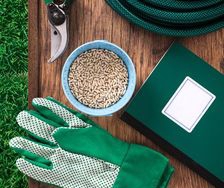
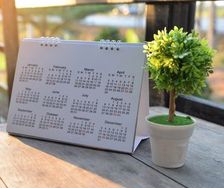
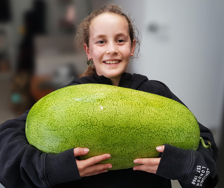
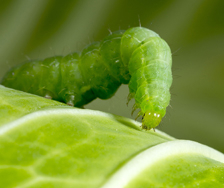
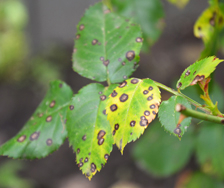
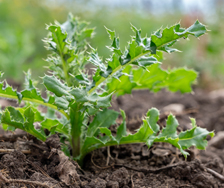






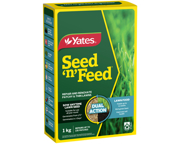




Share
Share this article on social media